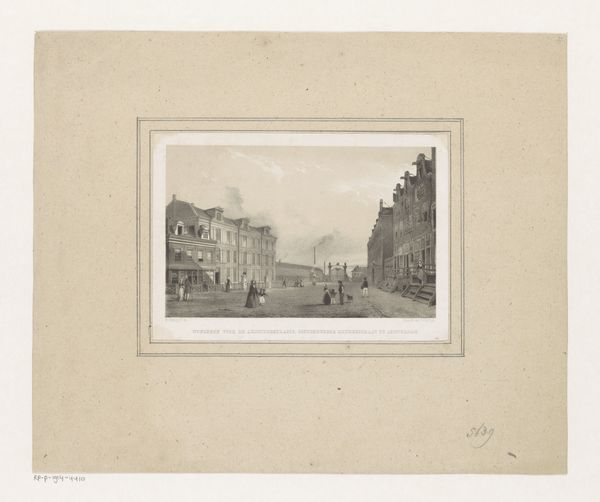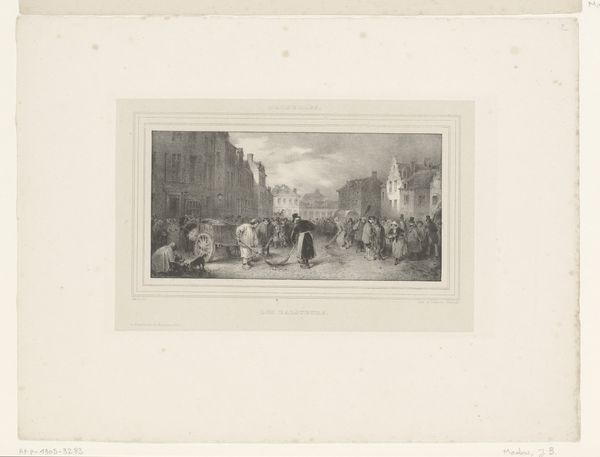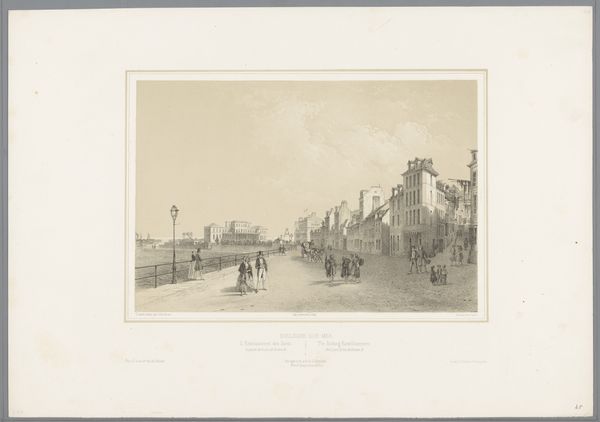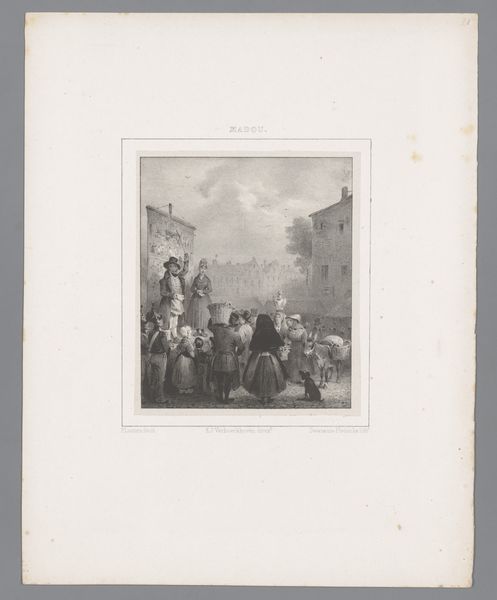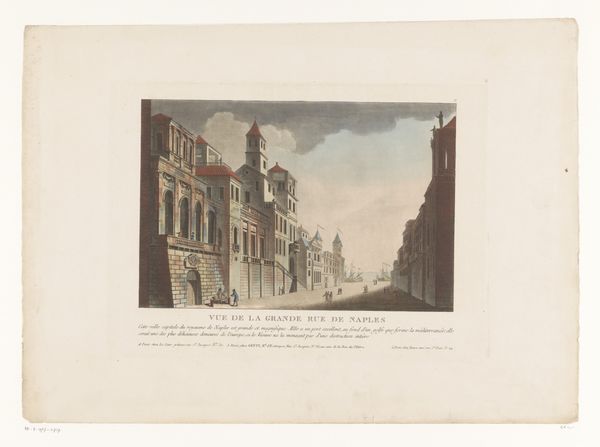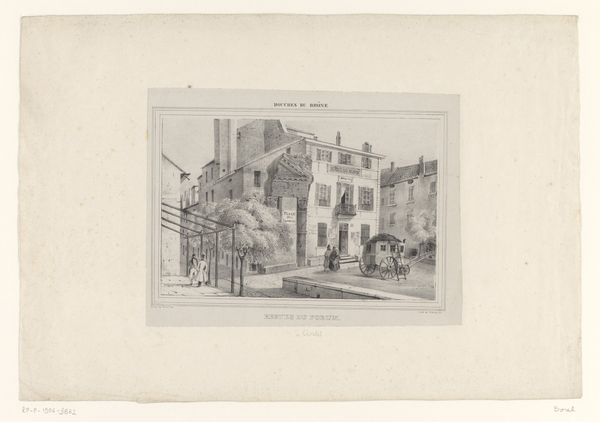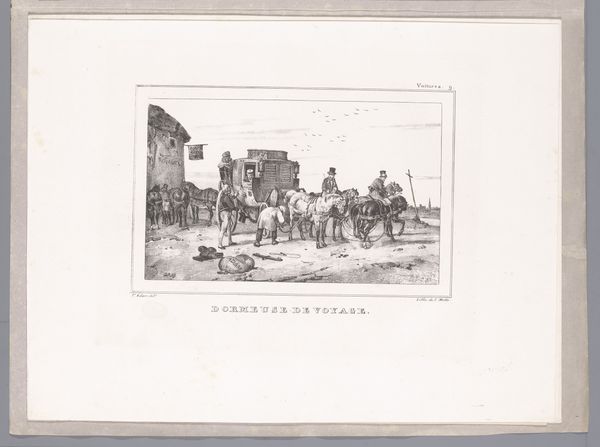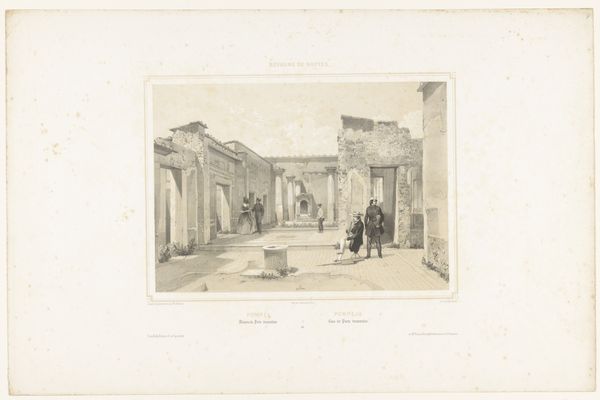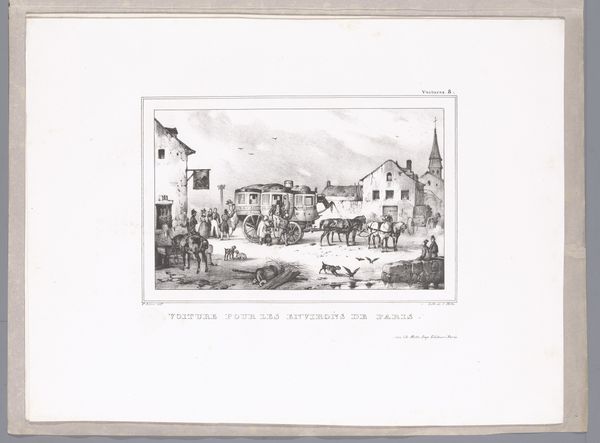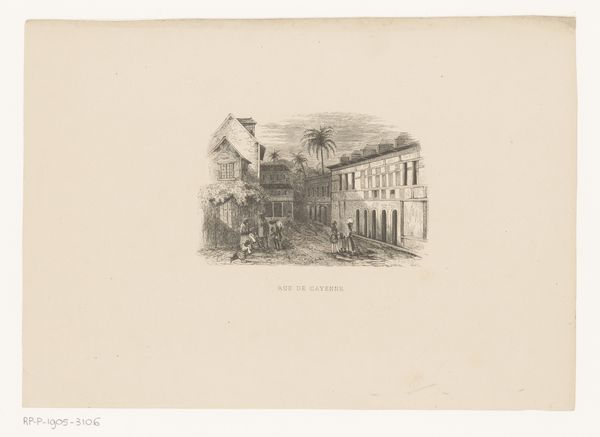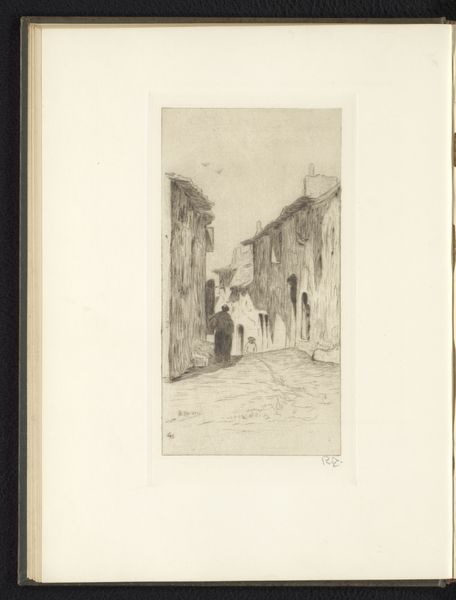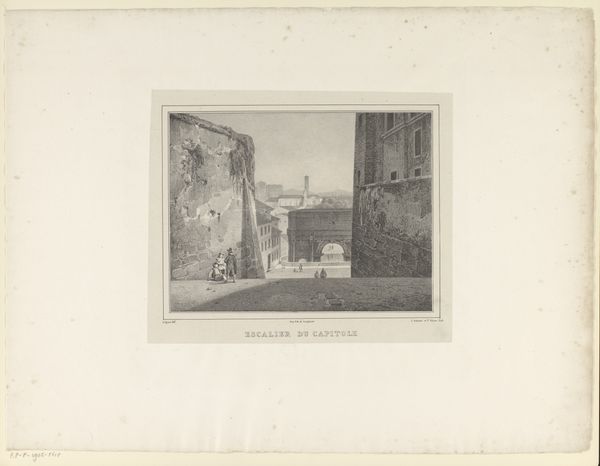
drawing, pencil
#
drawing
#
perspective
#
romanticism
#
pencil
#
cityscape
#
realism
Dimensions: height 270 mm, width 351 mm
Copyright: Rijks Museum: Open Domain
Editor: Here we have Théodore Fourmois’ "View of the Hoogstraat in Brussels," dating from around 1825 to 1827. It's a pencil drawing, and I’m struck by how the artist captured such detail with such a simple medium. What do you see when you look at this drawing? Curator: What interests me is Fourmois’ selection of the pencil. What possibilities did pencil offer him as he pictured the shifting industrial world around him? Editor: That’s a great question, I didn't consider the implications of the chosen material. How would you approach an analysis of this drawing with a material lens? Curator: I'm drawn to how Fourmois used this accessible material – the humble pencil – to capture what's happening in this very busy urban space. What goods are being moved? By whom? How does the quick and easy reproducibility afforded by drawing reflect the evolving systems of exchange within Brussels? What are the implications of using a readily available tool like the pencil to document this new world of commodities and labor? Editor: It’s amazing how this simple drawing holds so much social information. Thinking about it in terms of production and labor, it changes my perception. Curator: Exactly! This drawing asks us to consider the labor, trade, and burgeoning commercial systems present, documented by the very act of sketching with a common tool. Editor: I hadn't considered how a focus on materials could reveal the socio-economic dimensions of a cityscape like this one. Thanks for the fresh perspective. Curator: Of course. Thinking about art through its material conditions brings the artist closer to our own understanding of labor and consumption.
Comments
No comments
Be the first to comment and join the conversation on the ultimate creative platform.
